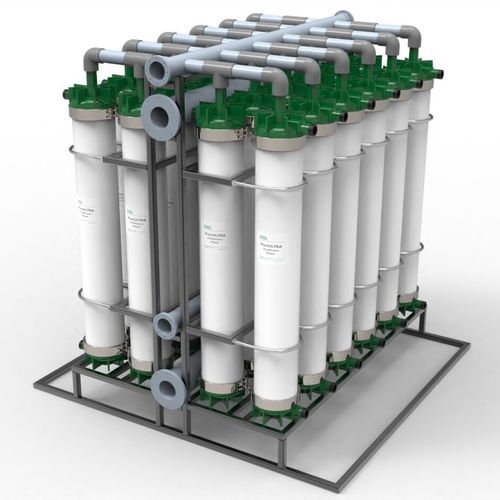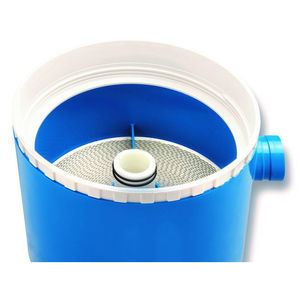
- Hydraulics - Pneumatics
- Filter and Separator
- Membrane ultra-filtration unit
- MANN+HUMMEL Water & Fluid Solutions
Particulate ultra-filtration unit PureULTRA IImembranefor waterfor wastewater
Add to favorites
Compare this product
Characteristics
- Technology
- particulate, membrane
- Designed for
- for water, for wastewater, for seawater
- Filtration size
0.025 µm
- Pressure
Max.: 0.02 MPa
Min.: -0.02 MPa
Description
Water resources continue to be one of the top environmental concerns around the world, leading to increased water recycling efforts in water and wastewater treatment facilities globally and reducing the consumption of fresh water. Getting wastewater to an acceptable level of purification for water reuse can be challenging as it requires several steps. On the other hand, it is important to have access to pure drinking water free from suspended solids and harmful pathogens. Ultrafiltration (UF) has shown demonstrated success in both applications.
UF is a process using a physical barrier to separate water and suspended solids, turbidity, silt, bacteria, and viruses from the feed water. In a system using pressurized PureULTRA II hollow fiber modules, the feed water may come from different sources such as surface water, groundwater, secondary or tertiary treated industrial wastewater, or other sources like tertiary treated municipal wastewater.
PureULTRA II UF modules are constructed using highly hydrophilic modified PVDF hollow fiber membrane with a tight nominal pore size of 0.025 micron. The outside-in flow configuration contributes to easier cleaning as it keeps the solids, pathogens, and other foulants on the outside of the fibers. The fiber is designed to handle most feed water sources and tolerate solids loadings while operating within an optimal flux range. These fibers offer 30% higher fiber tensile strength and elongation compared to state-of-the-art fibers on the market. They reject particulate matter, Giardia cysts, and Cryptosporidium oocysts, and can help in virus removal.
Catalogs
No catalogs are available for this product.
See all of MANN+HUMMEL Water & Fluid Solutions‘s catalogsOther MANN+HUMMEL Water & Fluid Solutions products
UF
Related Searches
- Liquid separator filter
- Filter with cartridge
- Filter cartridge
- Industrial filter cartridge
- Pressure separator filter
- Filter for industrial applications
- Stainless steel separator filter
- Fine filter cartridge
- Water separator filter
- Filter housing
- Water filter cartridge
- Cartridge filter housing
- Liquid filter housing
- Plastic filter cartridge
- Filter element
- Metal filter housing
- Stainless steel filter housing
- Pleated filter cartridge
- Filter bag
- Membrane filter cartridge
*Prices are pre-tax. They exclude delivery charges and customs duties and do not include additional charges for installation or activation options. Prices are indicative only and may vary by country, with changes to the cost of raw materials and exchange rates.





